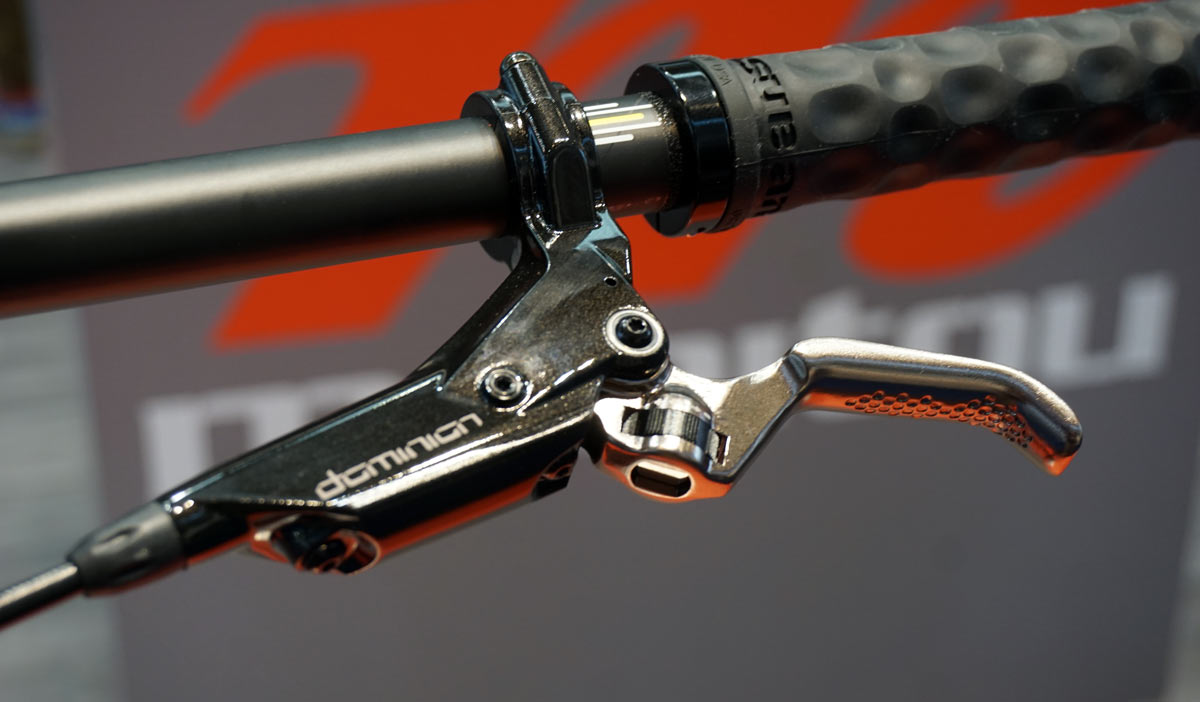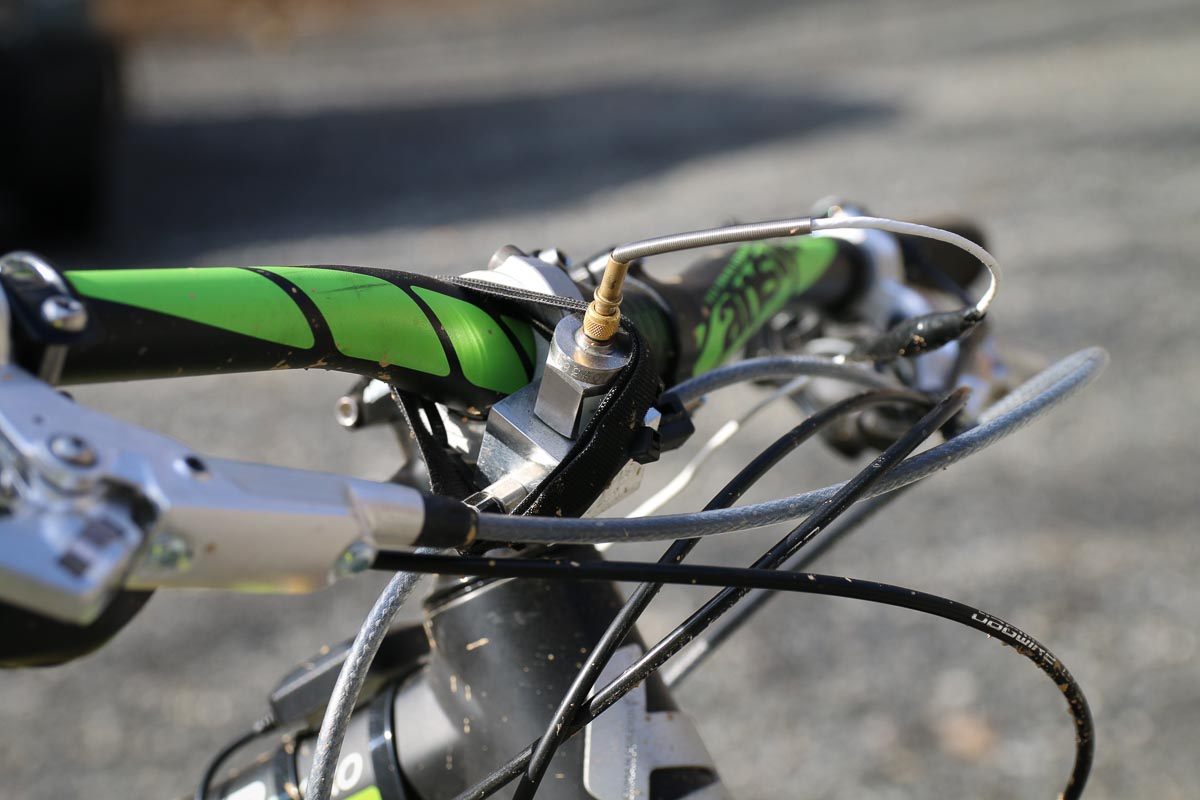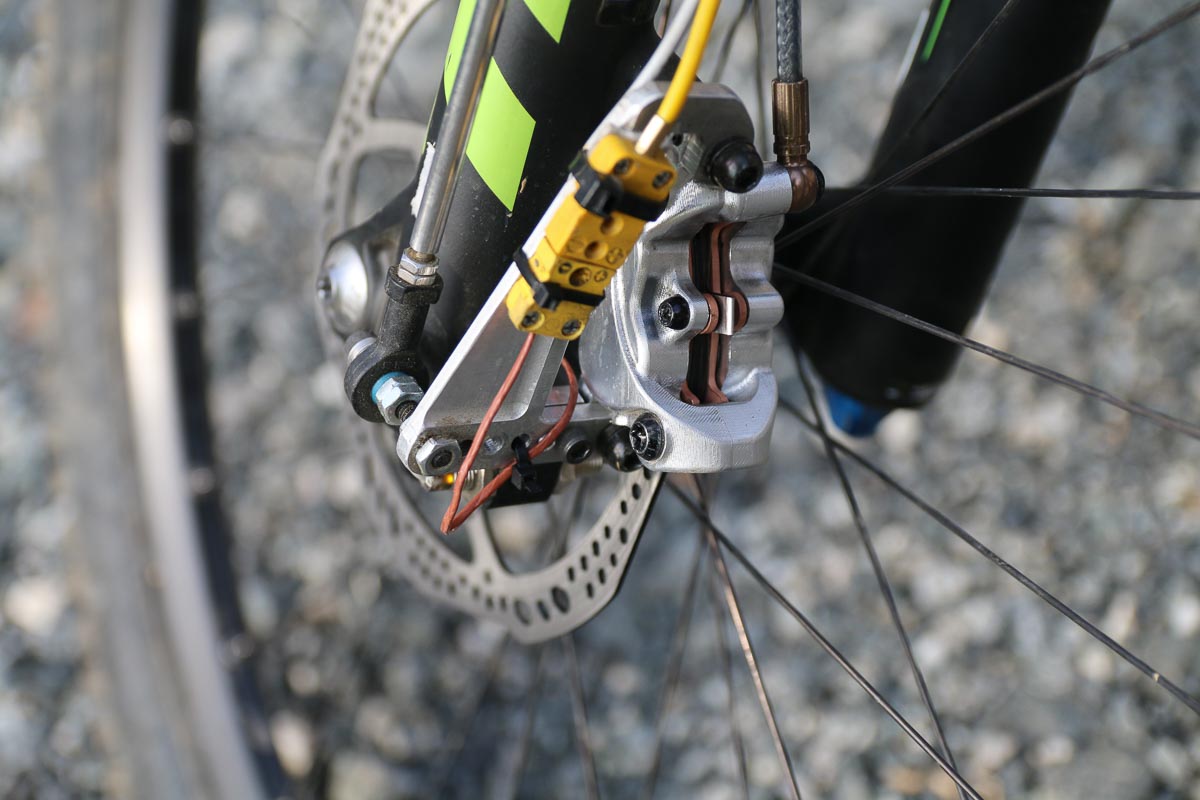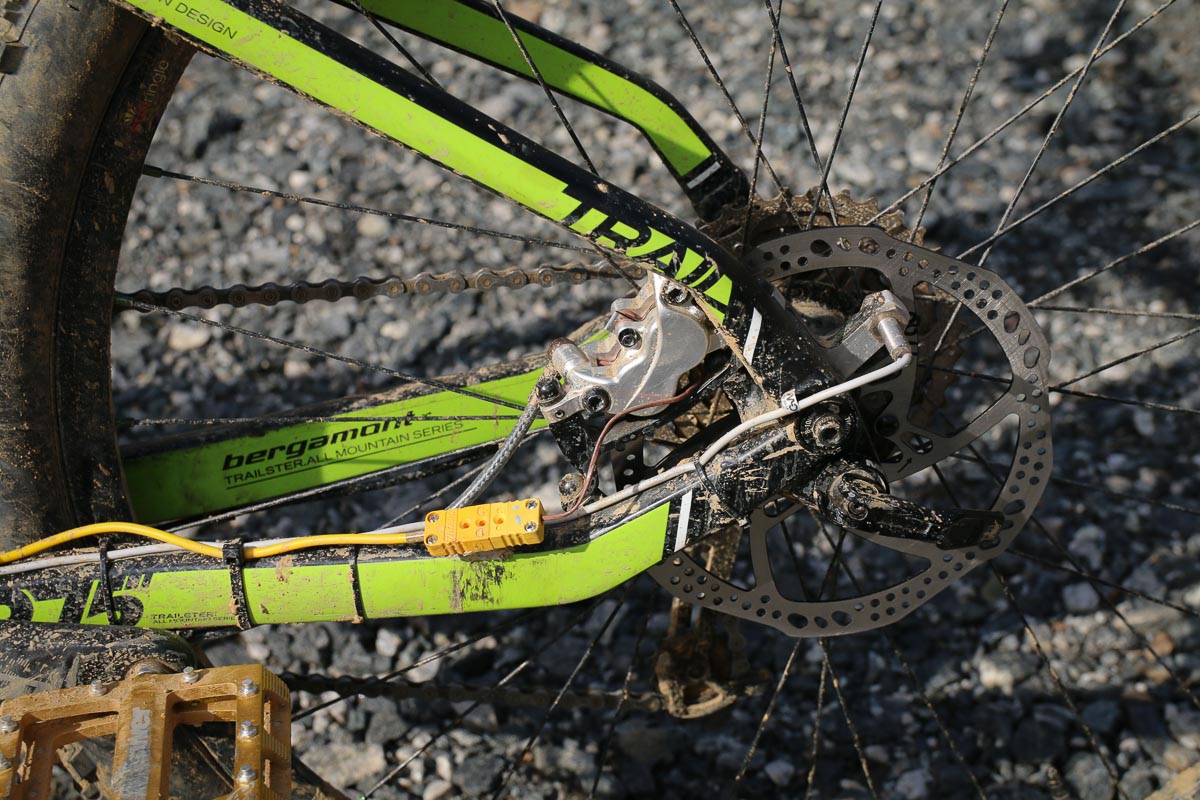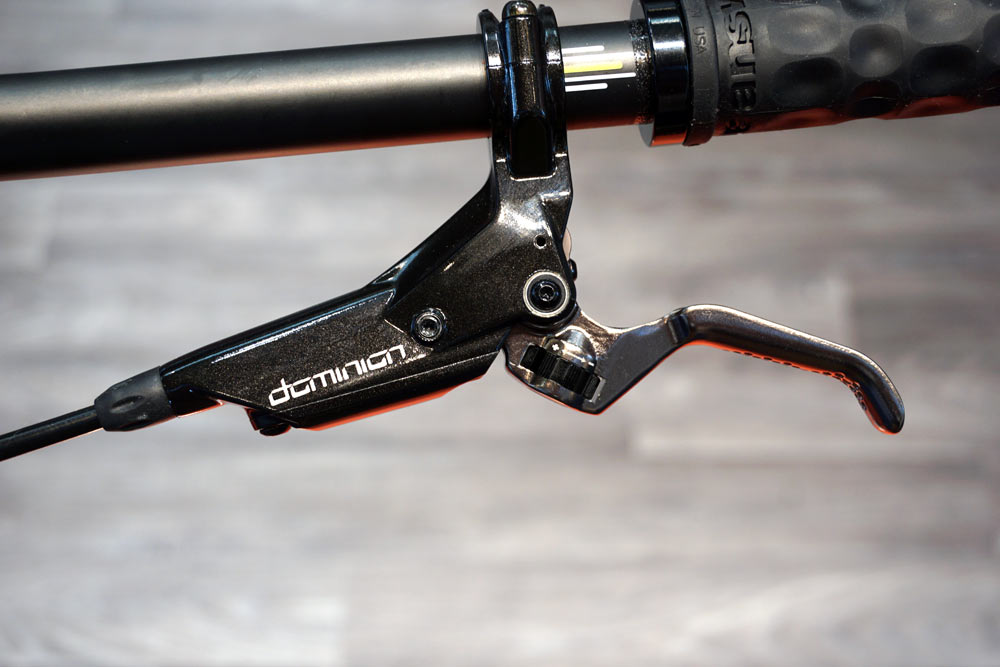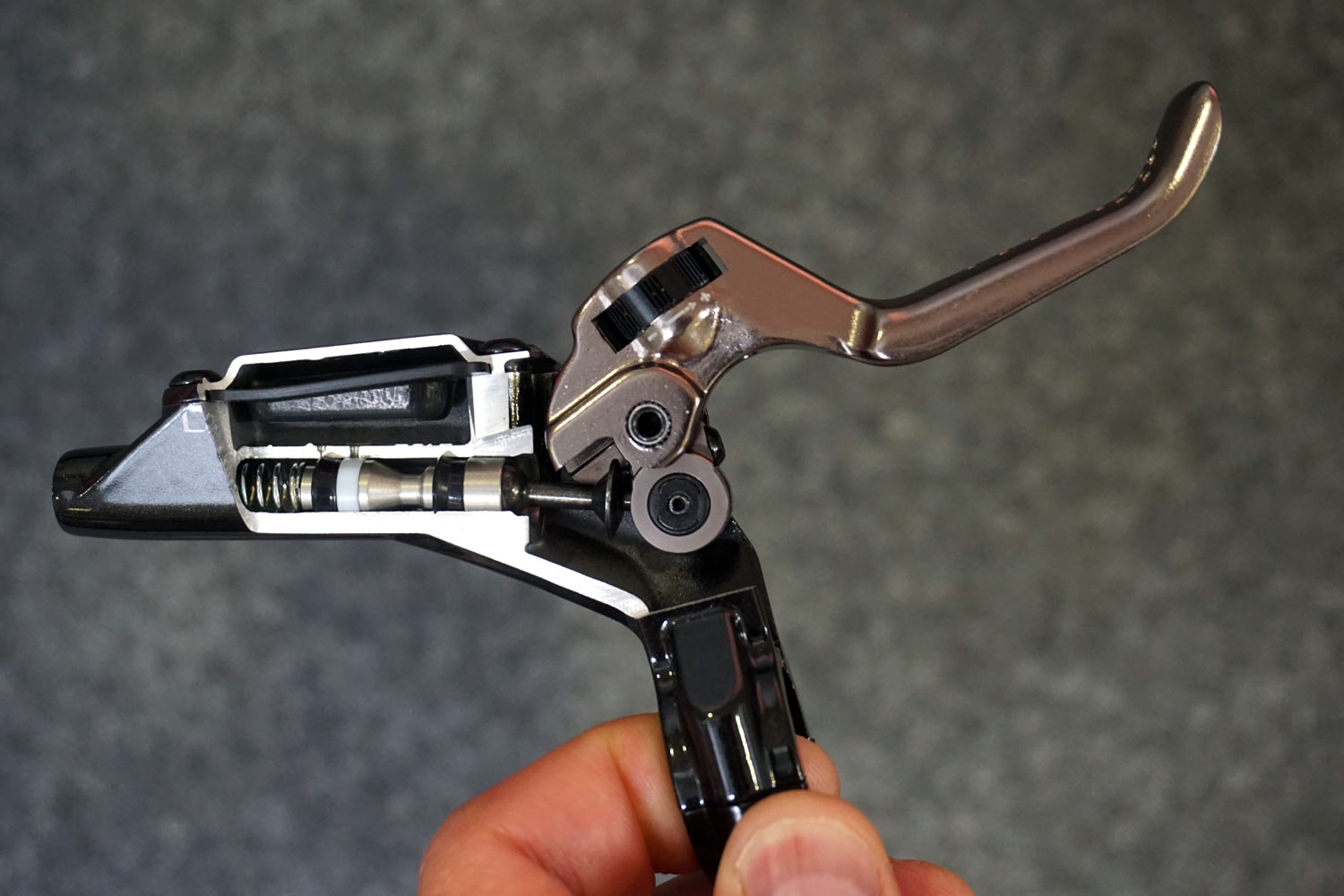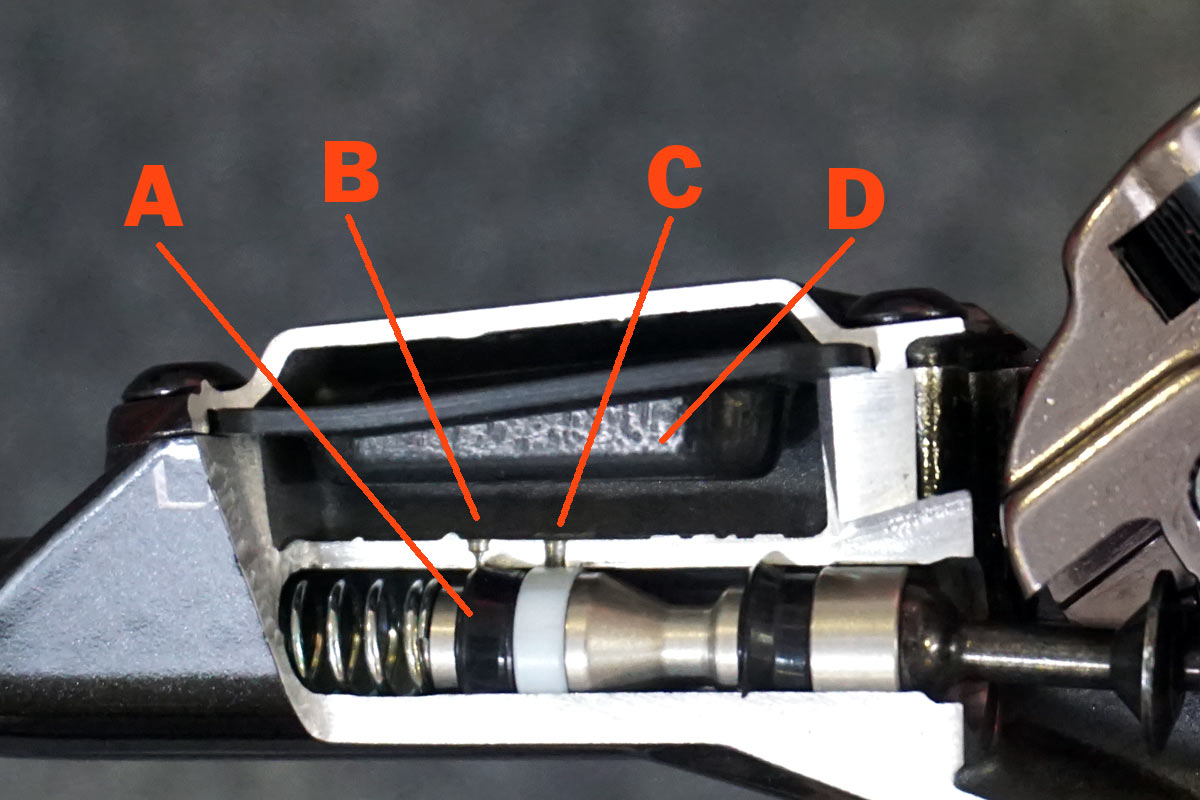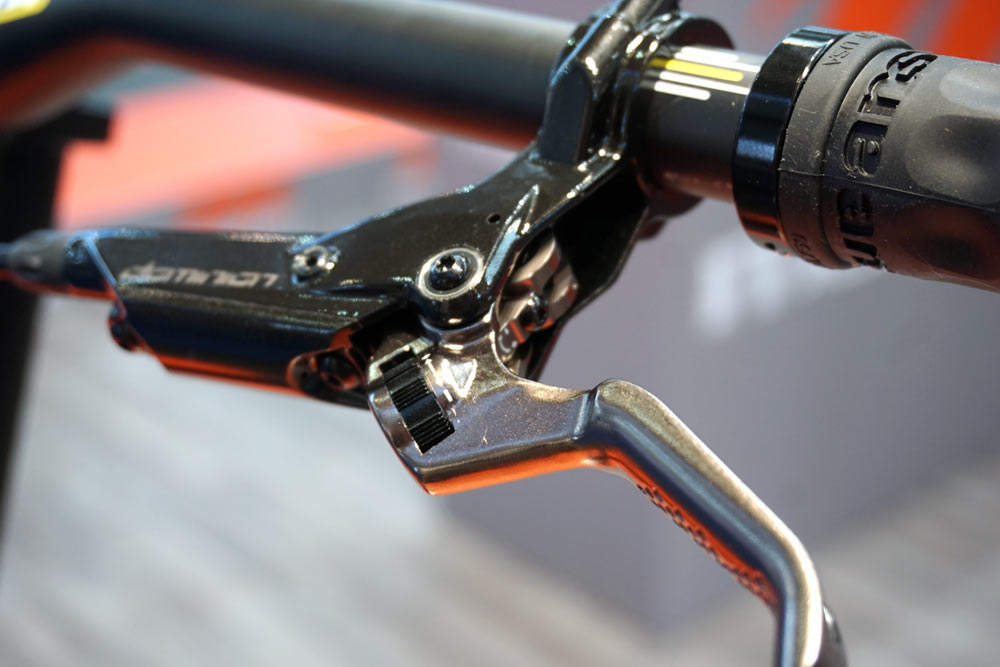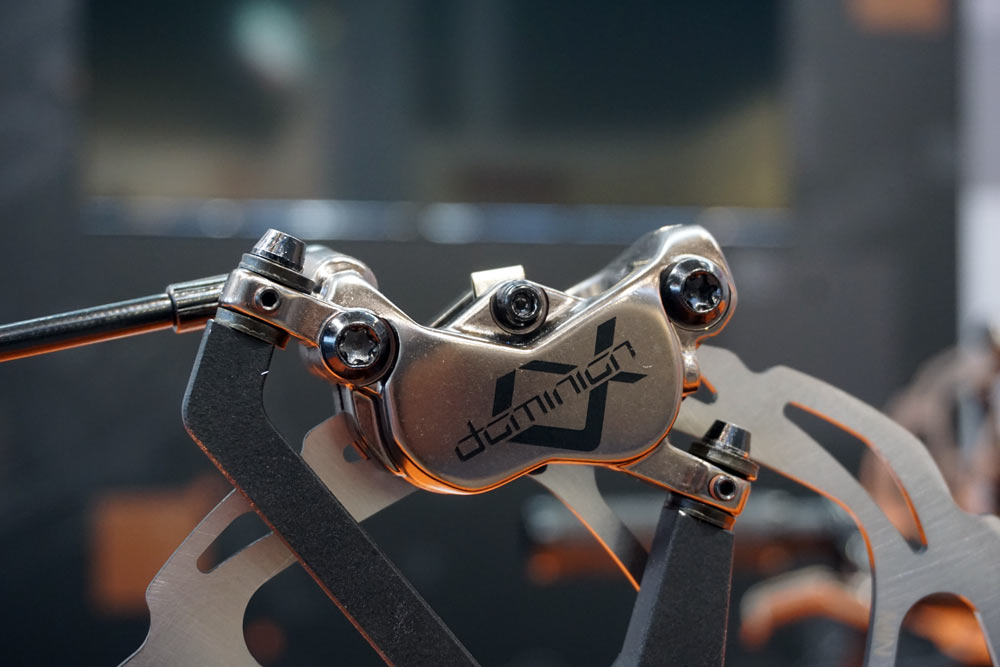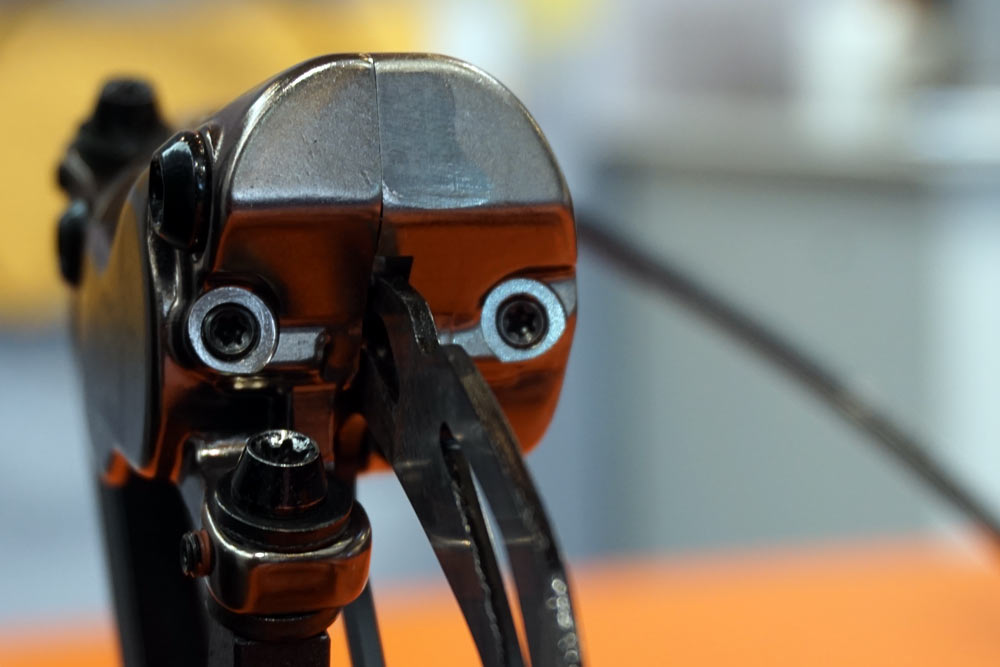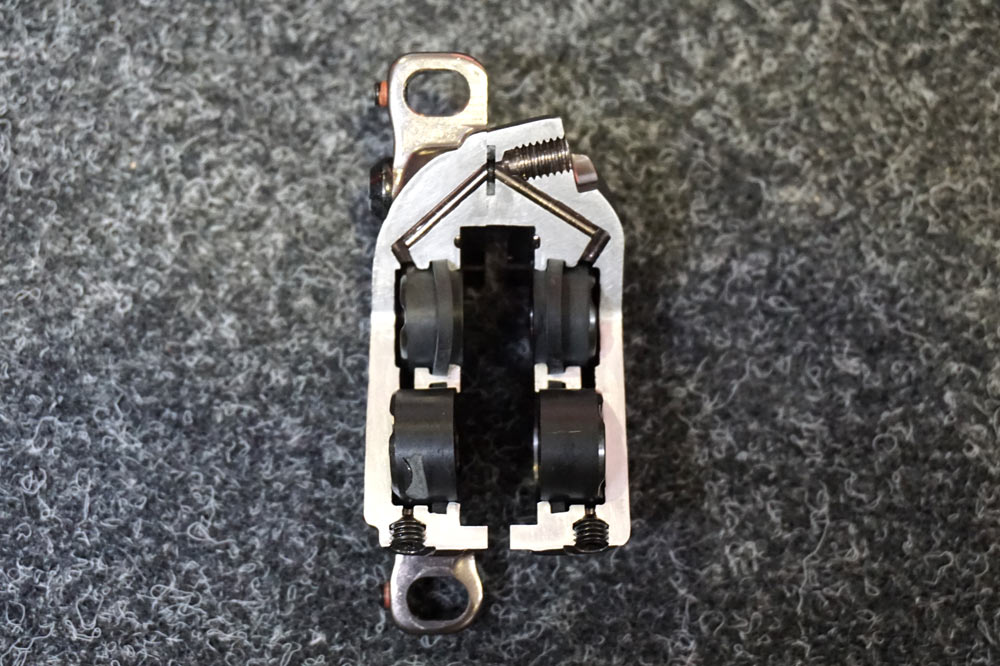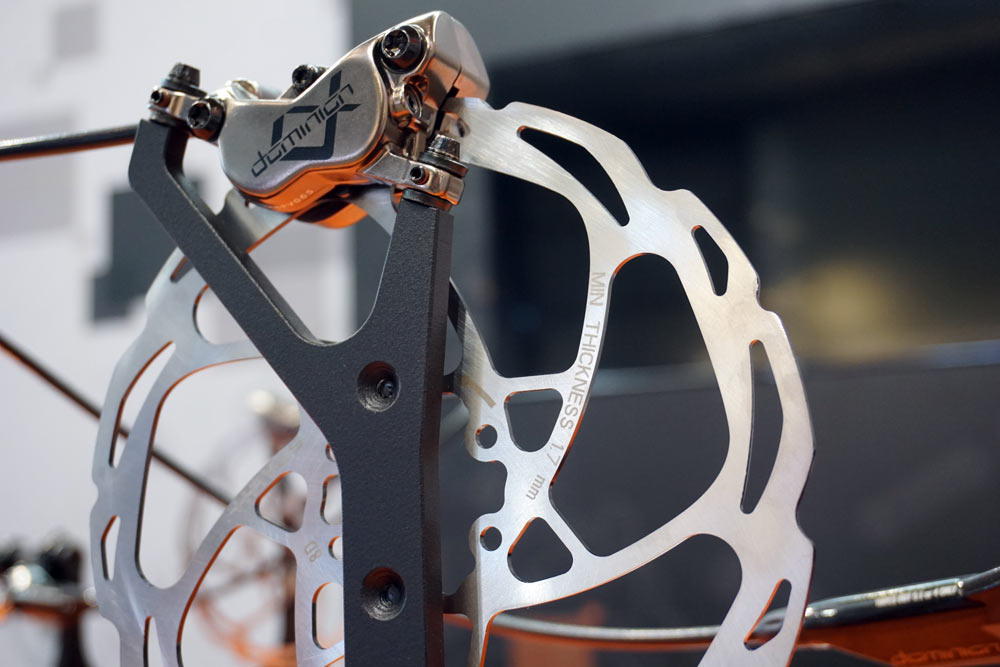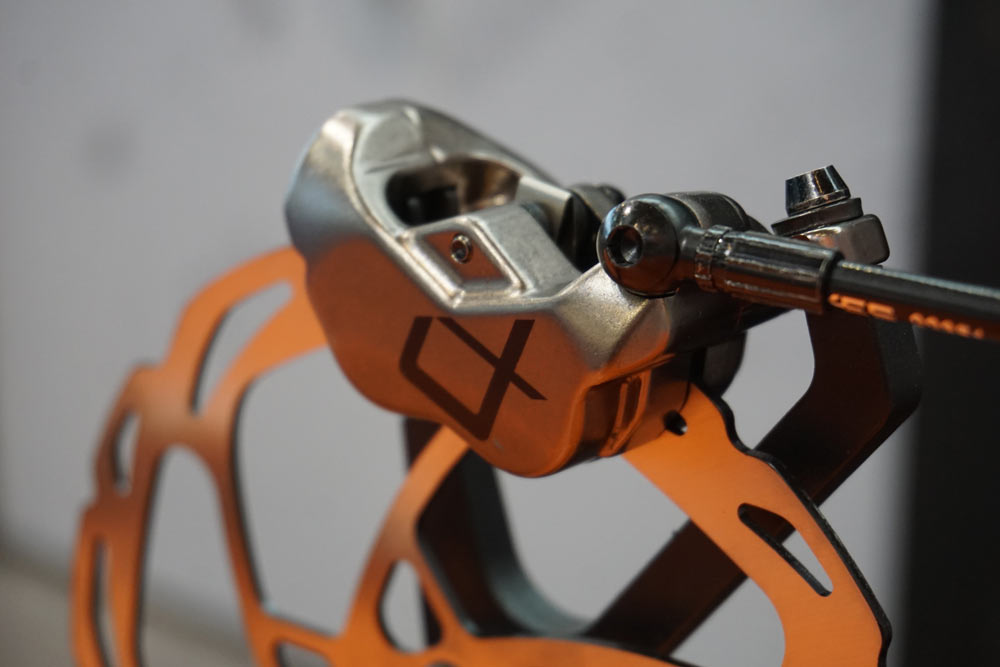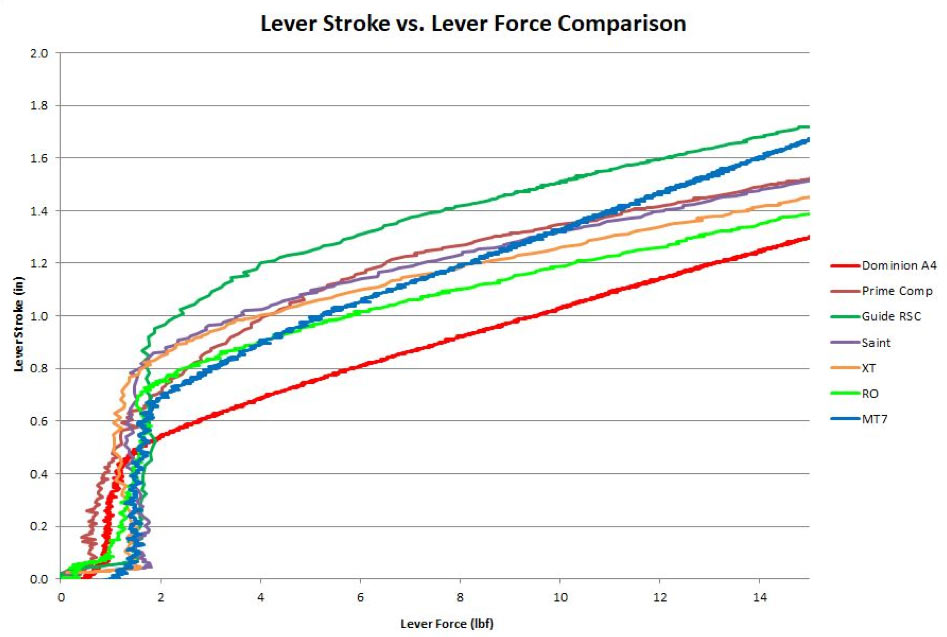The new Hayes Dominion brakes have taken everything they’ve learned from 20 years in the mountain bike brake business and put it into an all-new four piston brakeset for big mountain riding. Two decades ago, Hayes virtually invented the hydraulic disc brake for mountain bikes. But they’ve been doing brakes for powersports for things like Arctic Cat snowmobiles and Harley Davidson motorcycles for much longer. For MY2019, they put all of that knowledge and history on the table next to a clean sheet of paper and got to work.
Since they started, riding has changed, bikes have changed and riders have changed. They wanted a brake that was up to date in every way. So they had to figure out how people were using the brakes and how the bikes reacted to them. That starts with better testing methods…
Field Testing the New Brakes
Using the same data acquisition bike that we got to check out last Spring, Hayes has been using a new high tech approach to their brake development. Where their older brakes were predominantly tested in the lab, on a dyno, they realized that the braking requirements to stop a motorized rotor with tons of torque is vastly different than what it takes to stop a rider under real world conditions.
By strapping sensors to test pressure, braking force and speed, temperature and other variables, what they found was a big difference in how brakes are used on the bike versus in the lab. Maybe we shouldn’t be so surprised, but they say once they started using better data, their brakes started getting a lot better. The goals were better useable power (as opposed to just all-out gobs of power) and better modulation to control that power. The result of two years of development this all-new four-piston brakeset called Dominion.
Tech Details
Creating better, more usable power starts at the lever. They had several goals, which they sum up as “LoFi”, or Low lever effort, high fidelity output force. What that means in terms of performance is:
- Absolute minimum dead stroke
- Predictable power progression
- Realistic maximum power
- High clamping force
The new master cylinder puts the piston (A) right at the very edge of the reservoir (D) port (B). So, as soon as it starts moving, it closes the circuit and starts pushing fluid down the pipe, which is how they all but eliminated dead stroke. There’s a secondary port (C) that equalizes pressure between the backside of the piston should any oil end up there.
Each caliper is factory tuned to set the piston at exactly the right spot. Want a little more dead stroke? No problem, there’s a tooled adjustment that’ll let you change the bite point. There’s also a tool-free reach adjust knob.
The lever is connected to the piston through a linkage called Stable Rate, which means it’s designed to move the piston at a constant rate, which is how they get such a linear output. They’ll come with the standard bar clamps shown here, but are offering optional Peacemaker integrated shifter mounts to fit the master cylinder lever directly to SRAM Matchmaker and Shimano iSpec systems.
The caliper is the stiffest they’ve ever made, which was a necessity to handle the increased power. Why? Because if the caliper flexes, the brakes can feel spongy.
They borrowed the bleed process from high performance motorsports for a patent pending Two Stroke bleed process. The caliper has two bleed ports at the back of the caliper, letting you ensure you get every possible air bubble out. While it might be overkill, it’s a nice touch and presents a cleaner system than calipers that route the flow path past one side’s pistons and loop around to the other side’s pistons. They say the optimal process would be left side to lever, right side to lever, then side to side on the caliper.
Four 17mm diameter pistons push one of two new brake pad compounds. They’re shipping standard with a semi-metallic pad, and a sintered pad for worse conditions will be available aftermarket. The pads are held in place with a longer-than-normal screw that threads deep into the opposite side of the caliper.
They included their awesome Crosshair alignment system, which puts a small positioning screw on the mounting foot. Once you get the caliper bolted on loosely, these let you fine tune the position to center it over the rotor, then tighten it down without the caliper shifting on you. It’s brilliant.
One of the biggest issues with disc brakes is when they squeal, vibrate and basically ruin your ride. To solve this, they created a rotor with Modal Resonance Cancellation. Everything has a resonant frequency, so they tuned the rotor to counter the frequency of the pads, so they cancel each other out. Think of it like noise cancelling headphones, sound coming in is reversed by the speaker so you don’t hear the ambient noise.
The rotor surface is burnished and created specifically to match the pad material, so it beds in really quickly, then remain consistent over the life of the pad. What’s interesting is they’re only offering this with 180mm and 203mm rotors. The brakes are aimed at aggressive all-mountain to downhill riding, so they figured the bigger rotors were the right fit.
They went with DOT 5.1 brake fluid because it has the highest wet boiling point and dry boiling point of any bicycle brake fluid, it’s viscosity stable across the operating temperature range, it’s readily available, and it’s proven. The brakes come with their lifetime leak-proof guarantee, and they offer every piece of it separately so you can rebuild them if ever needed.
Performance Charts
Here’s how it all comes together: This chart shows the lever force versus lever stroke. The new Dominion (red) begins moving the pads way earlier than most.
And once it does, it requires lower lever force to reach the same clamping force at the pads. That should translate into smooth, easy to apply power.
Claimed weight for the brakes is 310g, all in, plus 160g to 200g for the rotors, including bolts. Retail is $229 (€235) per wheel for the brakes, and $50 (€51) per rotor. They’re all sold separately so you can pick the rotors you need and mix and match if desired.
The first batch has already shipped to US distributors, so they should be available through your local dealer by July 16th. European availability should be about the same to a week or so later.
